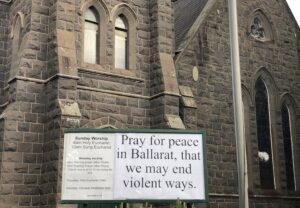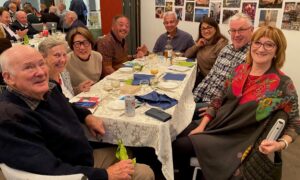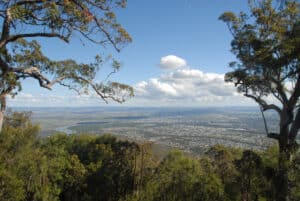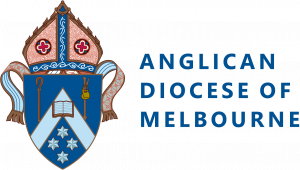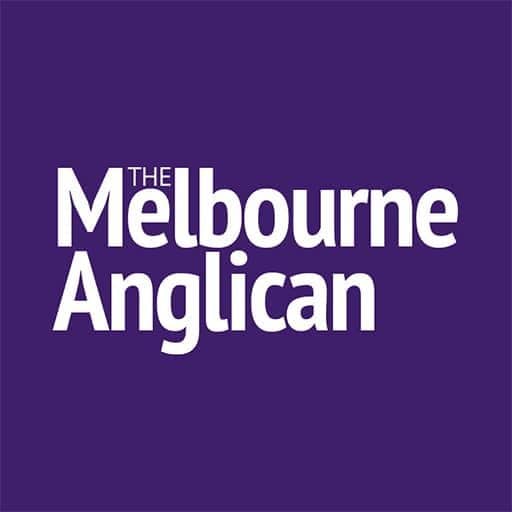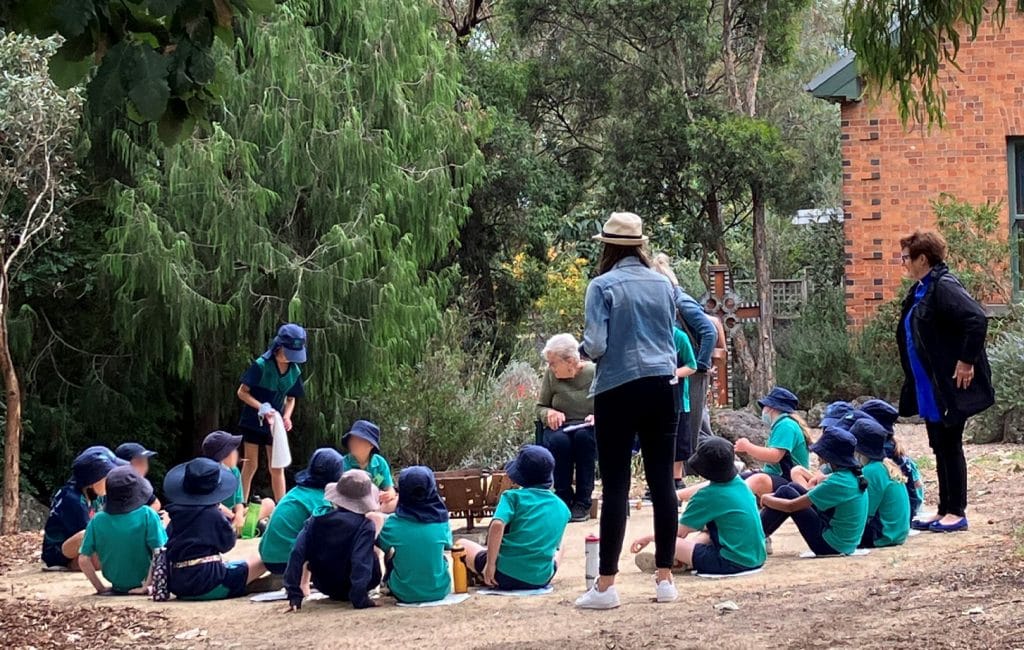
Jenan Taylor
4 April 2022
A Melbourne church is aiming to grow cultural harmony in its community by establishing a landmark project, inspired by the area’s Indigenous history and traditions.
St Margaret’s Anglican Church Eltham has installed a yarning circle in its gardens evocative of the historical meeting spaces where the area’s Wurundjeri communities had traditionally gathered to foster respectful relationships and share cultural knowledge.
Yarning circles were meeting environments created by First Nations’ people in which participants could communicate and collaborate safely.
St Margaret’s Do Justice group member Helen Robertson said the idea came about when the group heard about fire pits created by Indigenous prisoners as part of their rehabilitation, and decided to commission one.
Completed in early March, the yarning circle features a brazier at its centre, emblazoned with the word “Wominjeka”, which means “Welcome” in Woi-wurrung.
Ms Robertson said the Do Justice team had researched First Nations’ meeting protocols and had learned that the land for the Wurundjeri was spiritual, just as for today’s parishioners the land where the church stood was spiritual.
They also uncovered information about the church’s proximity to the old gathering places and that had prompted St Margaret’s decision to erect one as a tool for outreach.
Montmorency South Primary School’s grade three students were the first members of the wider population to use the yarning circle.
Their visit in late March was the culmination of a pilot six-week Indigenous education agreement between the church and the school.
The students sat cross legged inside the circle as Ms Robertson led them to reflect on questions about culture, identity and sacred spaces.
A display of Indigenous works collected by parishioners, families and friends was also part of the experience. Exhibited near St Margaret’s heritage-listed stain glass windows, the works included clap sticks used by the Wurundjeri and paintings by artist Nicky Dhamacy from Worowa College for Indigenous girls.
St Margaret’s Anglican vicar, Reverend Dr Linda Fiske said the display was arranged so that the students could note the characteristics of the Indigenous work and think about what it said about the people who created them and their beliefs.
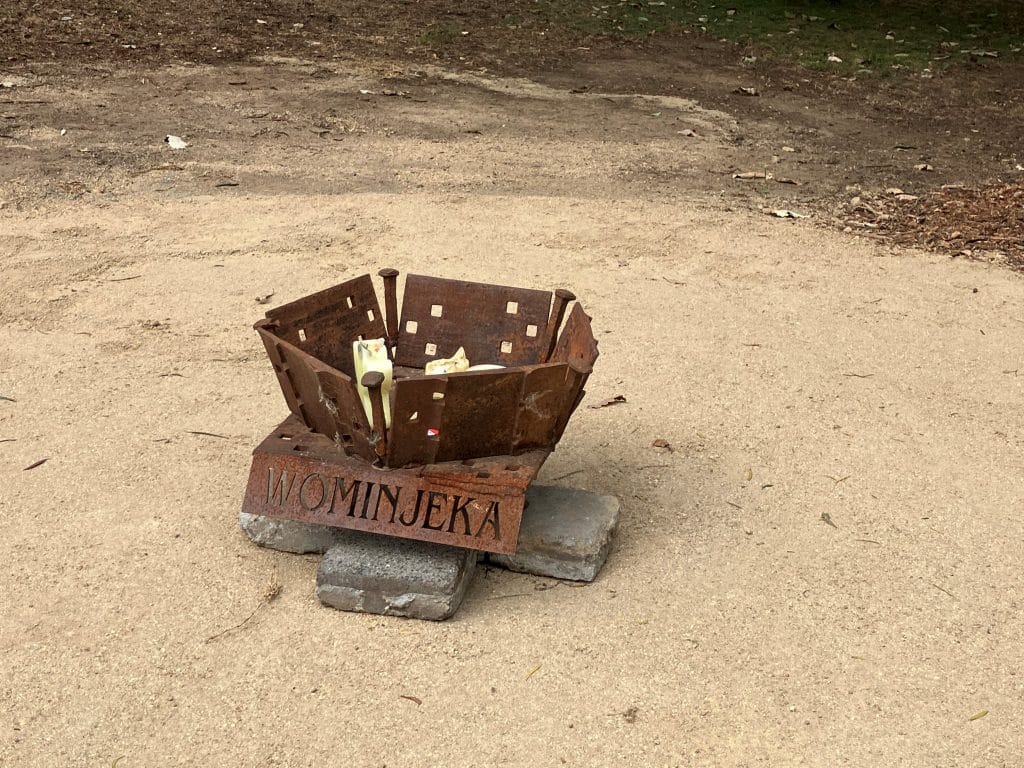
Children’s natural curiosity, propensity to listen closely and willingness to learn was why it made sense to reach out to young people first, Dr Fiske said. “They’re the next generation in terms of understanding mutuality, and respect and care for the community,” she said.
“They’ve learnt about the methodology of the yarning circle, the idea being that it’s a space where all people are welcome and where people listen to each other and converse and share ideas.”
Montmorency South Primary Indigenous program coordinator Tara De Bondi said the students had been confused about why they were going to be visiting the church.
Ms De Bondi said she had explained to the children that churches were places that people had attached religious beliefs to but were also important spaces where the community could come to be together.
She had also highlighted the Wurundjeri population’s approach to sacred gatherings, as significant reasons for reflecting on how land use had changed over time.
For Dr Fiske, the children’s responses to the church that indicated that many had not been in one before, was of deep interest.
“We weren’t wanting them to focus on the church but they’re quite surprised by the space itself,” she said.
“So, they’re learning about what it means to hold something as sacred and so, out of the yarning pit, they’re actually putting into practice the idea of listening and sharing and of mutual respect.”
She acknowledged that although the idea of a sacred space was important, they had decided to not proselytise.
“For some people just that initial step into a sacred space is confronting and daunting,” Dr Fiske said.
She added that she hoped the circle would encourage people from the community to feel that they could venture on to the church’s land.
Dr Fiske said there were plans to open the yarning circle to adults. However, establishing the space was also an education for the church in how to engage better with the Indigenous community.
“We’ve got people coming in to talk with us about what we need to learn and understand, so it just seems to me to be a fantastic avenue to open up dialogue and interaction. We’re really hoping that this would be a spark of something new for this community,” Dr Fiske said.
The Wurundjeri Woi Wurrung Cultural Heritage Aboriginal Corporation’s special projects officer
Charley Woolley said St Margaret’s had been great to work with and had been enthusiastic with their requests for guidance.
Ms Woolley said the church had also requested consultation early and had adhered to suggestions about how to work with First Nations people.

